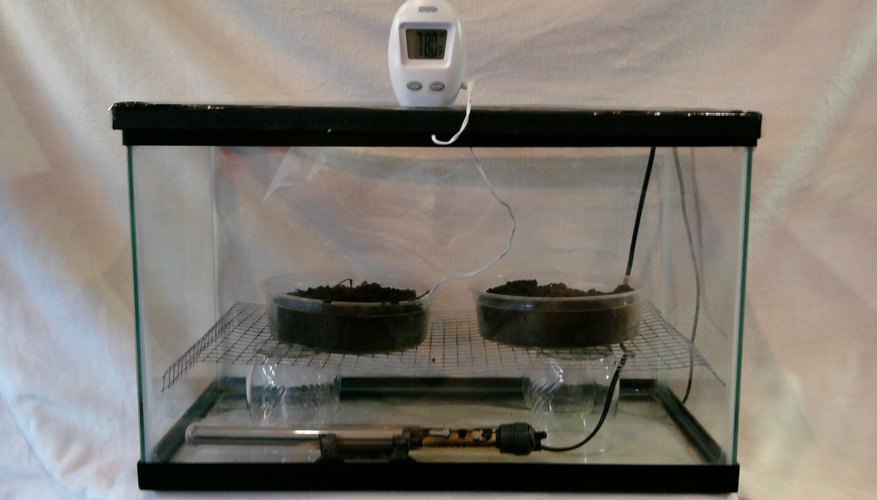Raising turtles and tortoises is a hobby enjoyed by many reptile enthusiasts. One of the best ways to ensure a good clutch of hatchlings is to place harvested eggs in an incubator. However, prices of commercial incubators range anywhere from £22 for a simple digital breeding box to £487 for a complex, multi-level cabinet incubator, and this doesn’t include all the accessories needed.
You need not be a rocket scientist to design and build a suitable tortoise and turtle incubator. A little ingenuity and items found around the house are all you need.
- Raising turtles and tortoises is a hobby enjoyed by many reptile enthusiasts.
- You need not be a rocket scientist to design and build a suitable tortoise and turtle incubator.

Set the automatic thermostat to 31.7 degrees Celsius and place it in the bottom of the aquarium.
Pour two to three inches of water into the aquarium, covering the heater.
Place four drinking glasses, two in front and two in back, into the aquarium. Two red bricks may be used instead of glasses.
Set the chicken wire rack or cake cooling rack on top of the glasses or bricks.
Fill the plastic containers with the medium to support the eggs. This can be dirt, vermiculite, sand, sphagnum moss or moist paper towels.
- Place four drinking glasses, two in front and two in back, into the aquarium.
- Fill the plastic containers with the medium to support the eggs.
Carefully place tortoise eggs into the soil and set the containers on top of the rack.
Place the thermometer lead on the soil beside the eggs.
Cover the aquarium with cling film and puncture several holes in the cling film.
TIP
Whatever materials you use to build an incubator, the most important factor to remember is temperature. The temperature should range between 85 degrees and 32.2 degrees Celsius. Tortoise eggs and terrestrial turtles need low humidity–usually around 70 per cent. Temperature determines the sex of the turtles. If you want females, keep the incubator very warm; if you want males, keep it cooler.
WARNING
Tortoise and turtle eggs should never be turned, shaken or rotated. Tortoises have delicate circulatory systems and blood vessels developing in the embryos can be easily damaged.
